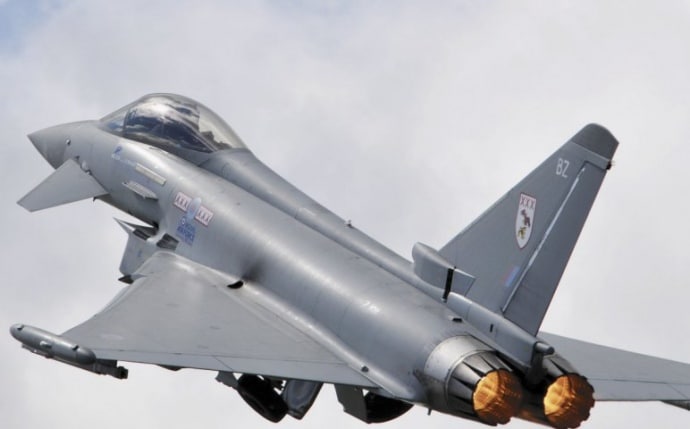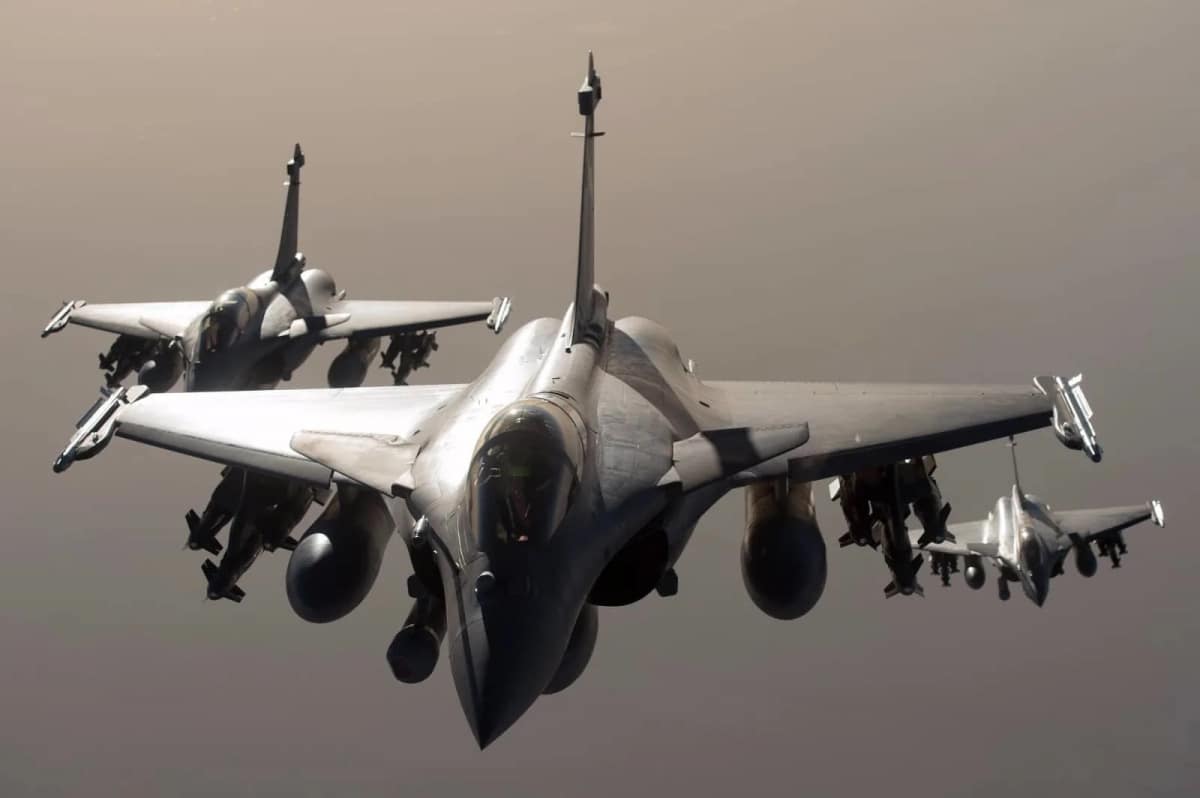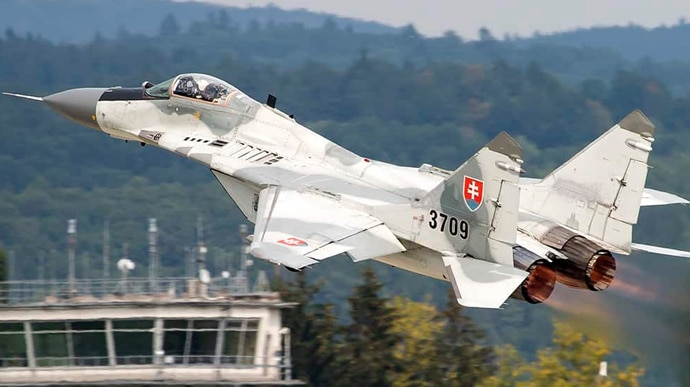Table of Contents
The current state of Ukraine’s combat aviation
The Ukrainian Air Force operates four main types of aircraft: MiG-29 and Su-27 fighters, Su-24M frontline bombers (and their reconnaissance variant, the Su-24MR), and Su-25 attack aircraft.
According to the new issue of the World Air Forces 2023 guide by FlightGlobal, which specializes in the aviation of the world’s armies, Ukraine has about 100 combat aircraft in its air fleet (this is public information).
According to the same rating, Russia currently has more than 1,500 combat aircraft in service.
At the same time, Ukraine’s combat aircraft is, to put it mildly, outdated.
Kyiv inherited almost all of its aircraft from the Soviet Union. In addition, in the last years of the Soviet Union, the equipment was rarely updated, so it all remained at the level of the early 1980s.
Given that most spare parts and components for aircraft can be found in Russia or post-Soviet countries, it was problematic to repair and modernize Ukrainian equipment even before the outbreak of hostilities. Obviously, after February 24, it was even more so.
Despite these difficult circumstances, since independence, Ukraine has managed to modernize its Su-25s and minimally upgrade some MiG-29s and Su-27s.
In particular, the Su-25 was equipped with an additional satellite navigation system, a digital sight was installed, the range of unguided munitions was expanded, and an infrared countermeasure was installed. In turn, some of the tactical Su-27 and MiG-29 received a new multifunctional screen and new satellite navigation systems.
See also: War for the Arctic or energy sabotage: why Russian spies have become more active in Norway
Given the poor technical condition of Ukrainian aircraft, it is not surprising that before the full-scale invasion began, Russians believed that they would knock out Ukrainian aviation in a matter of days. This did not happen. In extremely difficult conditions, the pilots, repairmen and operators of the Air Force’s air defense systems showed unprecedented bravery and, above all, ingenuity, preventing Russia from dominating the skies.
However, the year of the war could not but affect Ukrainian aircraft: superior strength of the Russian army, “friendly fire,” destroyed airfields, and the aforementioned lack of normal repair capabilities make it to talk more loudly about the need to re-equip the existing aircraft.
Moreover, talk of this began long before February 24.
Unified fighter
In May 2020, the Air Force Command issued the Air Force Vision 2035, which outlined the development of Ukrainian aviation for the period up to 2035.
The existing model of tactical aviation with many types of aircraft was to be unified into multifunctional military units armed with a single type of foreign-made fourth-generation multi-role fighter.
The transition to a single Western fighter had to take place in several stages:
- a tender for the purchase of 6-12 aircraft for trial operation;
- training of personnel;
- transition to NATO standards;
- formation of a full-fledged air fleet based on Western equipment with the simultaneous decommissioning of Soviet equipment.
According to this program, starting in 2026, Ukraine was to buy 8-12 fighters annually, and by 2035 the number of Western combat aircraft was to be increased to 72-108 (6-11 squadrons or 3-4 brigades).
The war crossed out this whole plan and forced Kyiv to move faster. However, its very presence shows that the talk of switching to Western aviation equipment did not arise today, and not even yesterday.
The Air Force Vision 2035 also indicated possible fighter candidates that were to become the basis of the tactical air fleet, from which Ukraine had to make a choice.
F-16, Gripen, Eurofighter Typhoon, Rafale, F/A-18, F-15
American F-16 and F-35, the Swedish JAS-39 Gripen, the French Rafale and the Eurofighter Typhoon produced by the international British-German-Spanish-Italian consortium were among the main candidates in the Air Force Vision 2035.
In 2021, the then Commander of the Air Force of the Armed Forces of Ukraine Serhii Drozdov, together with scientists from the Kharkiv National University of the Air Force, calculated the best option for procurement. At that time, the Swedish Gripen fighter looked like the most attractive option.
In general, each of the Western aircraft models has its own advantages and disadvantages. The aircraft themselves are a kind of platform for deploying navigation systems, avionics, and weapons of various types, which are many times greater than the capabilities of Soviet fighters.
And if Ukraine had more time, it could have afforded to analyze each of the existing options more thoroughly. However, a full-scale war has not completely wiped out all calculations and plans but has made significant adjustments to them.
Now Ukraine is counting on the type of fighter jets it can get as soon as possible.
The situation with free air access is even worse than with tanks.
Therefore, we will consider only those that have actually been discussed among politicians, diplomats, and the military.
Despite statements by US officials, the most realistic option in expert circles is currently the US F-16. Moreover, the Netherlands has already stated its readiness to discuss a potential transfer.
The F-16 Fighting Falcon is a multi-purpose American light aircraft developed by General Dynamics in the early 1970s that has long been a symbol of fourth-generation fighter aircraft. Because of its appearance, it is also called the Viper.
The F-16 is the most popular fighter jet in service in about 30 countries. Because of its prevalence in Ukraine, it is often compared to the German Leopard tanks. And this comparison (not a direct one, of course) makes sense.
At the very least, F-16s are in service with Poland, Slovakia, Bulgaria, and Romania. Even if our neighbors do not give them to us, in case of malfunctions, Ukraine can repair the aircraft in their service centers without sending them to the United States or Turkey, where there is a full cycle of operation.
The F-16 was one of the most used fighter aircraft in the late twentieth and early twenty-first centuries. The aircraft took part in about two dozen local conflicts and major wars. In particular, it was actively used in the Gulf War, conflicts in the Middle East, the Indo-Pakistani war, Afghanistan, and the former Yugoslavia.
F-16 fighters may face the problem of sensitive landing gear in Ukraine, which requires comfortable smooth runways, not slabs like ours. However, the Ukrainian Air Force promises to fix this problem quickly.
The second most frequently discussed aircraft on the list is the Eurofighter Typhoon by Eurofighter GmbH. It was produced in the late 1980s as a European competitor to American fighters.
The Typhoon was originally designed as an air superiority aircraft. However, during development and operation, it was given the ability to strike ground targets, so it turned into a multi-role combat fighter. This aircraft has good maneuverability and the ability to conduct combat operations in all weather conditions.
See also: Iranian kamikaze drones Arash-2 – what is known about them, their capabilities and characteristics
It is in service with the United Kingdom, Germany, Spain, Italy, Austria, Saudi Arabia, and Oman.
The President’s Office of Ukraine believes that, just like with the tanks, the UK, which is the main user of Typhoon fighters, could be the first country to unblock the provision of Western fighter jets to Ukraine.
Instead, British Prime Minister Rishi Sunak is more cautious in his assessments. At a meeting with Ukrainian journalists, he called the transfer of the planes a “difficult task” for Britain and noted that London is ready to help other countries that decide to provide Ukraine with planes.
Typhoon fighters are known for their participation in the establishment of the no-fly zone over Libya in 2011.
The aforementioned Swedish JAS-39 Gripen fighters from Saab were also involved. Produced in the late 1980s, the aircraft is currently in service with Sweden, the Czech Republic, Hungary, the United Kingdom, South Africa and Thailand.
Three Swedish giants were involved in the design and production of this fighter jet: Saab, Volvo and Ericsson. Among the features is the ability to accelerate and land quickly, which would be useful for the Ukrainian Air Force in the context of broken airfields.
Ukraine has already submitted a request for Gripen fighters, but the Swedish authorities are not yet ready to share the aircraft. Stockholm explains this by saying that they need the fighters to ensure their territorial integrity.
Last week, another American jet, the F/A-18 Hornet, suddenly surfaced in the information space, as mentioned by Finnish Prime Minister Sanna Marin during her visit to Kyiv. This fighter jet is currently the main fighter in the US Navy and is in service with Finland.
However, the very next day, the Finnish Ministry of Defense said that discussions about the transfer of fighter jets to Ukraine were out of the question until Helsinki received the latest F-35 fighter jets in return.
Another aircraft that has long been on the list for possible transfer to Ukraine is the French Dassault Rafale.
In 2021, Emmanuel Macron was even supposed to offer Kyiv a €1.5 billion loan to purchase a squadron of Rafale fighters, but it did not come to an official proposal.
In the 1980s, the French planned to join a project to create a joint European fourth-generation fighter jet but had disagreements with their partners, so they created their own version, which is now in service with France, India, Greece, Egypt, Croatia, and the UAE.
Among the Rafale’s interesting features is the RBE2 multirole radar, which uses an electronic optical target detection system and is capable of simultaneously tracking about 40 aircraft during combat.
Initially, French President Emmanuel Macron stated that “nothing is off limits” in the context of fighter jets, but later he changed his cheerful stance to a cautious one. Now, Macron’s statements are in the same tone as those of other partners: “airplanes are not a priority for Ukraine”.
Western compromise
Partner countries usually justify the slowdown in the delivery of Western fighter jets with several arguments.
First of all, they mention the infamous “red lines” and the reluctance to “provoke an escalation of hostilities.” The second reason is Ukraine’s unwillingness to fully accept the fighter jets into service.
And while the first factor is mainly political and diplomatic, the second is related to many other factors. Starting with the training of Ukrainian pilots, ending with the training of maintenance personnel and bringing the infrastructure into proper condition.
The transition from Soviet airplanes to Western equipment can actually take a long time. For example, in the early 2000s, neighboring Poland re-equipped its air fleet and trained pilots for 4-5 years.
In turn, according to the British Royal Air Force’s website, the standard training for pilots is about 2 years, although the UK has been planning to train Ukrainians for up to 3 years.
According to Ukrainska Pravda’s (news website) sources in the Armed Forces, Kyiv has been asking its Western partners to start training Ukrainian pilots and engineers since last spring but has been denied.
The process has moved from the zero point quite recently.
Last week, it was reported that the US Air Force is testing the skills of Ukrainian pilots at a base in Arizona for possible training on F-16 fighter jets. CNN’s sources emphasized that it is not yet a question of flight training, but the presence at the Arizona base may mean that Washington has not completely closed the door on providing Ukraine with F-16s.
An alternative for Ukraine could be modernized MiG-29s, which are currently in service with Poland and Slovakia.
These planes were discussed last year, but the decision to actually transfer them has only just been made.
On March 14, Polish Prime Minister Mateusz Morawiecki said that Warsaw plans to hand over the modernized MiG-29 fighters within the next 4-6 weeks.
According to Military Balance, as of 2022, the Poles had 28 such aircraft in service, but no more than 14 are currently being transferred.
As for the planes of the 23rd Tactical Aviation Base of the Polish Air Force, these aircraft were received from the Czech Republic and Germany and modernized to NATO standards by rescaling the indicators in radio navigation equipment, communication systems and identification friend-or-foe.
In early March, Jaroslav Nad, the Minister of Defense of Slovakia, which has long been awaiting NATO’s decision on the aircraft, stated that Bratislava had no plans to use its modernized Soviet-made MiG-29 (MiG-29AS). Therefore, it is ready to hand them over to Ukraine as soon as possible to “help save the lives of Ukrainians.”
According to him, Slovakia had 11 planes in service, 10 of which they want to transfer to Kyiv, and one to keep as a museum piece.
The Slovak MiG-29AS were modernized in the 2000s by the Russian Federation by installing new Western-made avionics, including a flight computer, navigation systems, and multifunctional indicators in the cockpit.
Despite the modernization, both the Polish and Slovak MiG fighters remain Soviet equipment that has been converted to NATO standards rather conditionally and can hardly be compared to Western fourth-generation fighters.
Originally posted by Yevhen Buderatsky on Ukrainska Pravda. Translated and edited by the UaPosition – Ukrainian news and analytics website
See also: The factor of North and South Korea in the Russian-Ukrainian war




